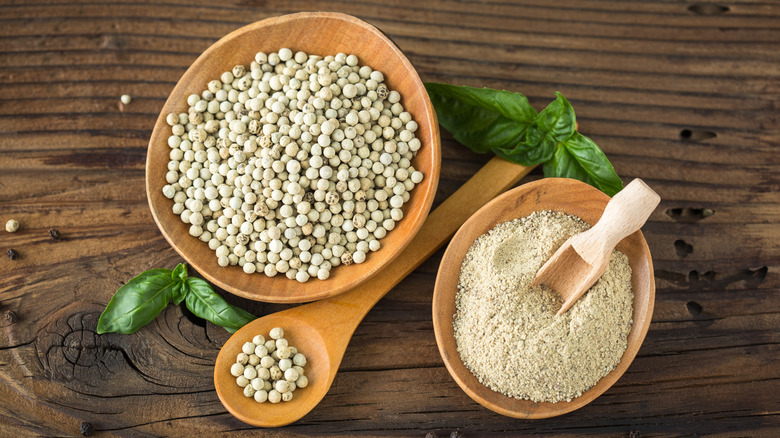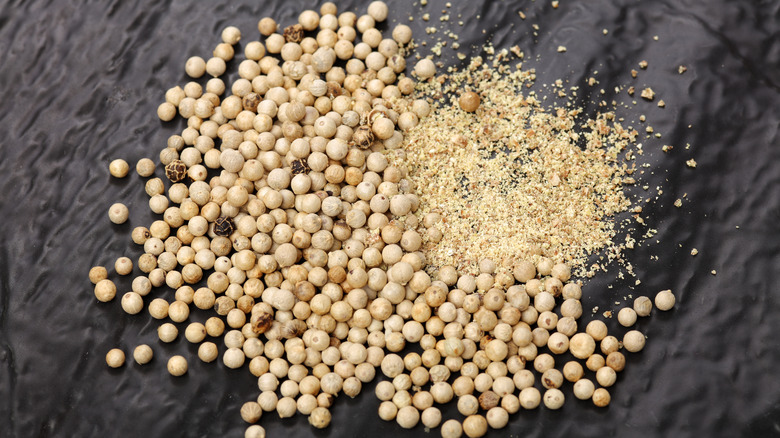Why White Pepper Is So Commonly Used In China
Salt and pepper — these two condiments are seemingly ubiquitous dining table stalwarts, although not in all culinary spheres. Head to a casual Asian dining spot, and discover a new range of do-it-yourself tableside flavors; chili pastes, fish sauce, sugar, and in Chinese-style eateries, a container of white pepper. This spice may seem reminiscent to black pepper, but it's not identical and arises far more commonly in Chinese kitchens.
This condiment originates from a shared pepper plant, only it is processed in a different fashion. As opposed to black pepper which is made from unripened berries that dry and shrivel into black peppercorns, white pepper is made from ripened berries with the skin removed, which creates a less pungent, but more consistent hot and peppery taste. The flavor difference between white and black pepper takes on further complexities based on the variety, but generally, the culinary applications are quite distinct.
As a result, it's both the appearance and flavor that white pepper is China's spice of choice. Cooks prefer it for its lack of remnant flakes, with its white texture blending seamlessly into applications. And additionally, the likable flavor similarly complements other aromatics, whether it's as a spice base or a finishing garnish. Such a subtle nature makes it a Chinese culinary favorite.
White pepper seamlessly forms a spice base in Chinese cooking
This alternately colored pepper isn't exclusive to Asian cooking; it's employed in French sauces and also used to flavor the cream sauce atop classic Swedish meatballs. In such applications, its role is to offer a soft peppery note without the crunch and color of black pepper, so this white peppercorn variety is especially mild.
Conversely, in Chinese and Southeast Asian cuisines, the go-to white pepper is fermented, which amplifies umami flavors. As a result, it possesses a much brighter, funkier, and more intense flavor, imparting a crucial note to many Chinese dishes. It's the spice that brings the heat to hot and sour soup, and many other Chinese broth-based dishes, since when ground, it easily dissolves in water. And it's also a component in marinades, adding a fragrant note to proteins like chicken.
Additionally, you'll find it as a finishing touch to a range of fried dishes, especially from the Canton province, coating everything from crab to beef, vegetables, and comforting salt and pepper squid. Diners sometimes garnish food with the spice themselves; a shaker of white pepper can be found on Chinese tables. So next time you're sampling East Asian flavors, don't miss out on this spice's flavor — it's a fundamental part of the Chinese palate.

